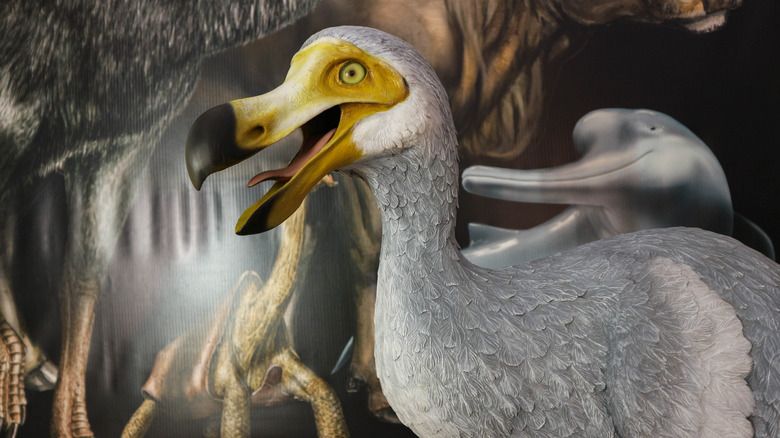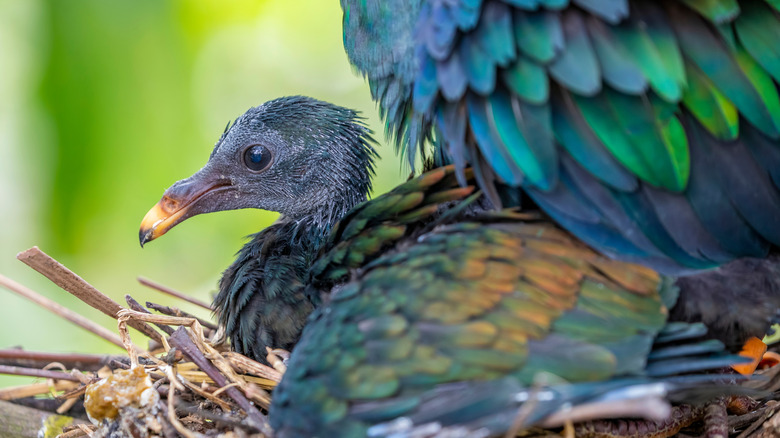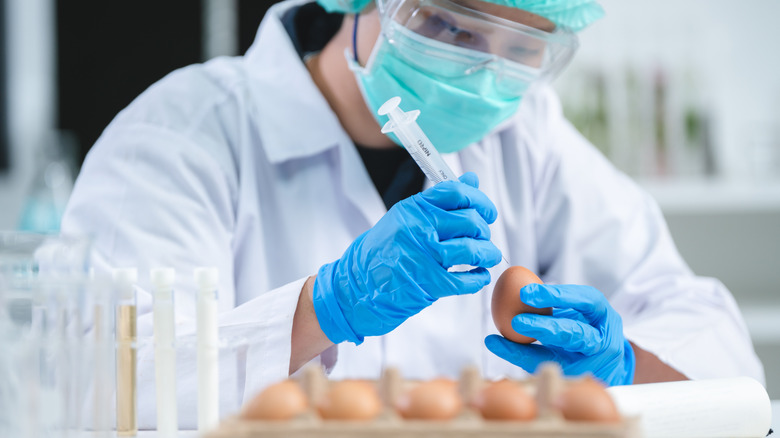After Being Extinct For Hundreds Of Years, Scientists Are Resurrecting This Bird Species
A biotech startup is taking the first real steps towards bringing the dodo bird back from extinction. No one has seen this bird since the late 17th century, but that doesn't mean it has been forgotten. On the contrary, the dodo bird is a clear example of human-driven extinction. It's a symbol easily recognized by many, yet humanity doesn't really know much about the dodo. That might soon change thanks to Colossal Biosciences, the company behind the de-extinction project. It's the same Texas-based company that in April 2025 announced the birth of three direwolf pups (sort of), named Romulus, Remus, and Khaleesi.
The project to revive the dodo is still in its infancy, although Colossal's researchers recently succeeded in culturing primordial germ cells from the Nicobar pigeon, the closest living relative of the dodo. These cells are critical to the de-extinction project because they're the forerunners of eggs and sperm. Mastering them may allow scientists to engineer the genetic traits of the dodo into surrogate embryos, perhaps in other bird species.
Still, expectations are tempered: The researchers estimate that a dodo-like bird could emerge in five to seven years. But the company acknowledges that many technical, ecological, and ethical hurdles remain. The questions range from whether the recreated bird will truly behave like the dodo, to how to restore its habitat in Mauritius. Also, there are broader questions about whether we should even try. For now, the idea that one day a dodo might again walk among us is moving from fantasy towards possibility.
From the Nicobar pigeon to the dodo
Bringing back the dodo isn't a matter of cloning. It's closer to rewriting nature's instruction manual. Because no living dodo cells exist, scientists at Colossal Biosciences have turned to its closest relative, the Nicobar pigeon, as a genetic starting point. The plan hinges on a special type of cell known as the primordial germ cell (PCG), the embryonic ancestor of sperm and egg cells. These cells hold the key to passing genetic information from one generation to the next. Colossal's researchers have learned how to culture and maintain them from Nicobar pigeons.
From there, the work moves into the delicate realm of genetic editing. Using DNA fragments recovered from dodo remains, scientists are comparing the dodo's genetic blueprint with that of the Nicobar pigeon, identifying which genes likely shaped the dodo's distinctive appearance: the large body, downy feathers, and peculiar beak. Once those genetic differences are mapped, the team can begin editing the pigeon's PGCs to carry dodo-like traits.
Since birds don't gestate in a womb, one more step is required. The edited pigeon germ cells are injected into the embryos of chickens that have been engineered not to develop their own germ cells. In theory, as the chicken embryo grows, the implanted pigeon cells migrate to its reproductive organs and mature into functional sperm and eggs that contain edited dodo-like genes. Offspring from those reproductive cells could, with several generations of refinement, resemble a living facsimile of the dodo. The new dodo would be an animal built from modern DNA but shaped by ancient code.
The work so far, and the road ahead
So far, Colossal has made several notable strides. The company recently announced that its scientists had successfully cultured viable Nicobar pigeon germ cells, an essential breakthrough that brings the theoretical plan closer to reality. The company has also established a breeding colony of Nicobar pigeons in Texas to provide a steady source of biological material for research. In parallel, it has created lines of chickens genetically altered to serve as suitable surrogates. That means these chickens lack their own germ cells, making room for the edited pigeon cells to take root.
Even with these steps, Colossal admits that the path ahead is complex and uncertain. The dodo genome, pieced together from centuries-old specimens, remains incomplete. Many genetic sequences are still missing or degraded. That means scientists must make educated guesses about how to fill the gaps, relying on what's known about other, similar bird species. There's also no guarantee that the modified pigeon germ cells will integrate seamlessly within the chicken hosts or produce viable offspring. And even if a dodo-like chick eventually hatches, researchers face the deeper question of whether it will behave, mature, or reproduce as the real dodo once did.
If all goes according to plan, Colossal admits it could take several years until a viable bird emerges. But its critics argue that even success wouldn't constitute a true resurrection. What Colossal hopes to create, it argues, is a genetic approximation. This proxy dodo wouldn't be the same bird that once roamed the wilderness of Mauritius. Conservation biologists warn that such projects risk diverting money and attention from endangered species still fighting for survival today. The company counters that the technologies developed along the way, especially the germ cell manipulation, could help prevent future extinctions and even fight climate change.


